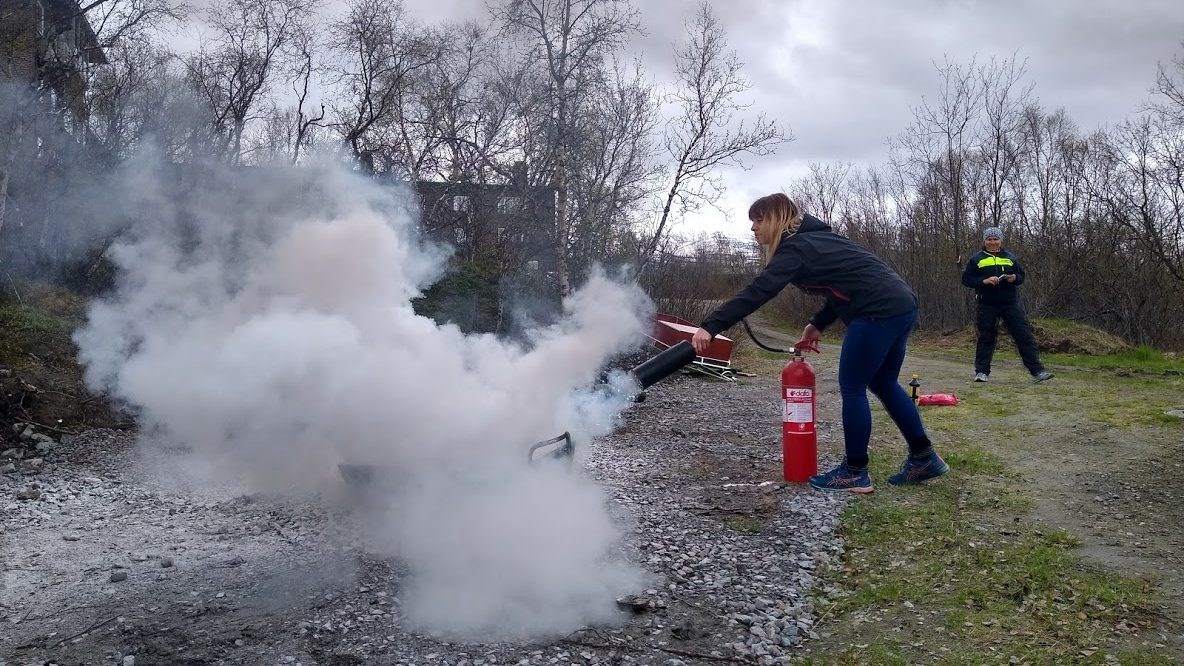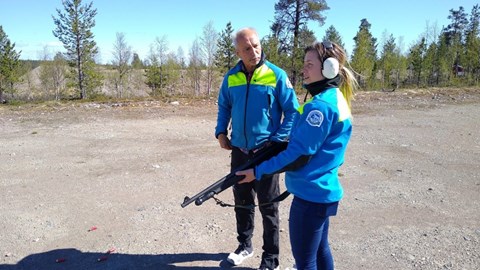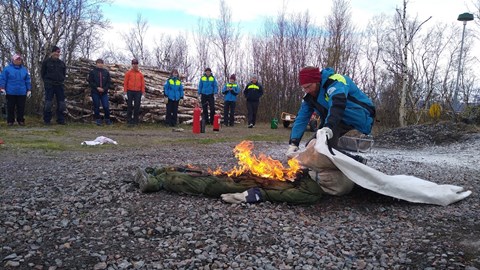“The course was good preparation for my fieldwork in Alaska”

Charlotte Fredriksson works as a PhD student at the Department of Geological Sciences at Stockholm University. To prepare for field studies in Alaska, she went to the Abisko Scientific Research Station and attended a field course given by the Swedish Polar Research Secretariat.
How can the field course help you in your future fieldwork?
– Since this is the first time I’m going to fieldwork, and also in a place as far away as northern Alaska, the course has helped me prepare for what safety equipment to carry and how I use it in the wilderness. For example, it is about communication equipment and first aid.
– In the part of Alaska that I will be doing my fieldwork, there are plenty of grizzly and black bears that you may encounter and that can be very curious of themselves. Therefore, just as in Svalbard and Greenland, you need to carry weapons with you as protection. The element of weapon training and theory has therefore been of great use as I learned how to handle a gun safely and how to act at any bear meetings, for example how to scare the bear and in the worst case have to protect against a bear attack. The course has made me feel much safer for the upcoming fieldwork in Alaska.
Can you describe your research and your research project in Alaska?
– I am doing research on magmatic rocks with a focus on dating and determining their chemical composition to be able to distinguish between geological events, formation processes and the type of tectonic formation environment. My research project in Alaska is about age-determining and analysing the geochemistry of magmatic rocks and clasts that have been eroded and transported from the Brooks Range mountain range via river systems to a huge sedimentary basin (the Yukon-Koyukuk basin). There the clasts have been deposited and solidified into the sedimentary rock conglomerate. It is important to determine the age, the formation environment, and the processes for these magmatic clasts as it can help us understand when, where, and how the Brooks Range and the Yukon-Koyukuk basin were formed. This, in turn, is of great importance in being able to reconstruct when and how the continents around the Arctic Ocean have joined and moved to the present position.
When do you go and how long do you stay away?
– I would have gone to Alaska at the beginning of July this year, but due to covid-19 we had to postpone this year’s fieldwork to next summer. I will then be away for about 2-3 weeks.
What are you most looking forward to in the project?
– To finally get to the area that I have read and researched for so long! I wrote my bachelor’s and master’s theses in this area, and it feels fantastic to now be able to go there as a doctoral student and take samples.
Why is this research important?
– Research on rocks in connection with plate tectonics is important to be able to understand how the continents of the earth have joined and moved, which in turn can help us understand how factors affecting the climate such as ocean and air currents, volcanism and mountain building looked like and how they changed over time.
Something you want to add?
– I am super happy with the course and can highly recommend anyone who will be working in the field to take it. The fact that it was held in Abisko means that you get a little more wilderness feeling during the field course which was nice.


